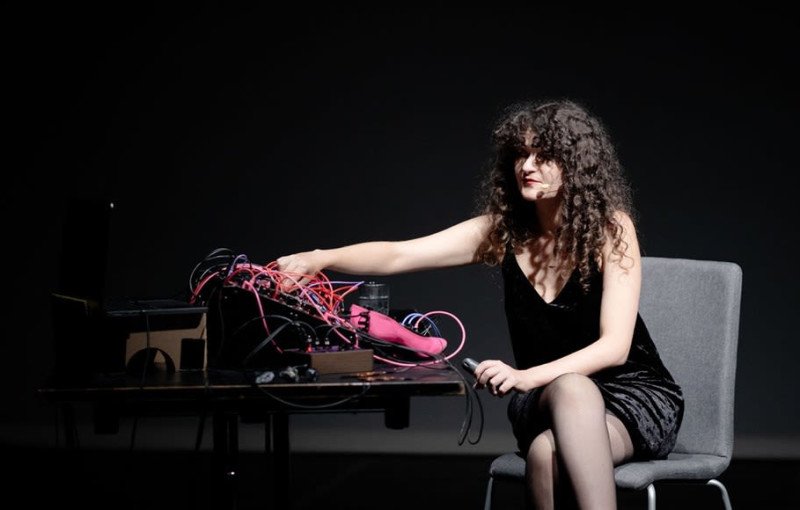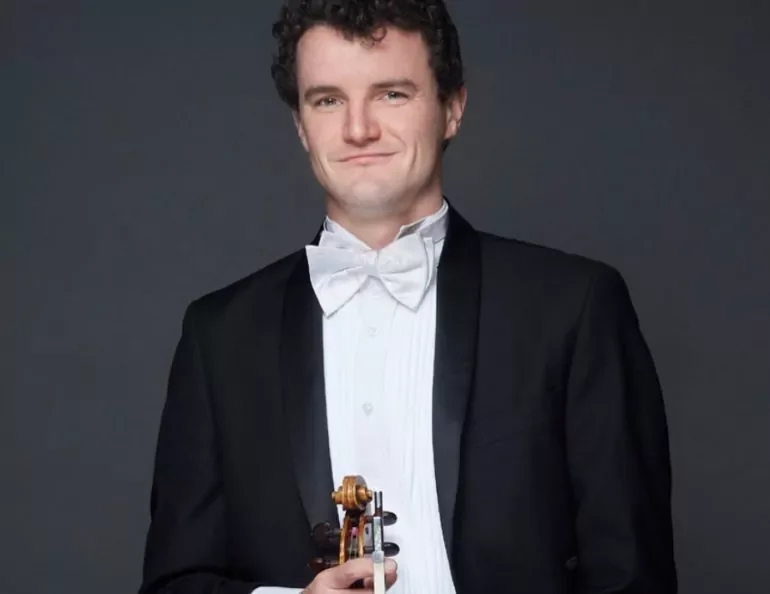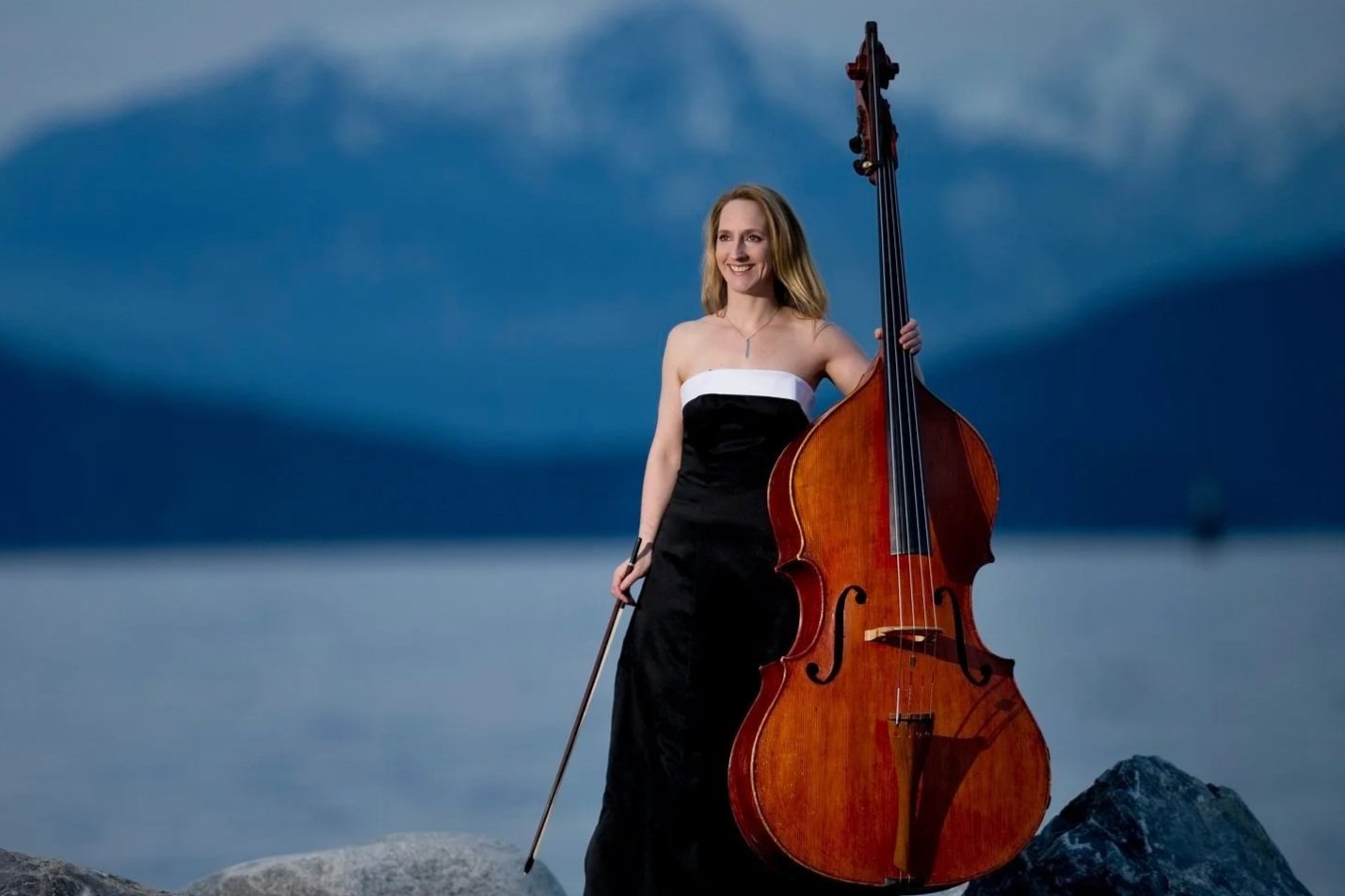Ioana Vreme Moser finds a sense of play in noise art, at Vancouver New Music's Parallel 06
Romanian artist’s instruments are both crude and sculptural, starkly futuristic and whimsically odd.
Ioana Vreme Moser
Vancouver New Music presents Ioana Vreme Moser at the Annex on March 16, as part of Parallel 06
ALTHOUGH IOANA VREME Moser’s experiments in sound art produce music like you’ve never heard before, they’re also a fine illustration of the adage that everything old is new again.
Behind the Romanian-born, Berlin-based interdisciplinary artist’s wildly imaginative pieces—which can involve living trees, wired-up yet very fashionable shoes, and stroboscopic animation—is a solid if self-taught understanding of basic physics, coupled to a passion for early radio and telecommunications technology.
Of course, those are not the only ingredients in Vreme Moser’s mix. Before learning to use a soldering iron, she’d already become an accomplished visual artist and mastered the demanding art of classical ballet. But music, she explains, has offered her a rules-free environment for exploration, and she’s happier in sound than in other, more formal disciplines.
“In Romania, like in during the Soviet times, we had this rigid education in the arts, and this went on until the 1990s and the 2000s,” she explains in a Zoom conversation from her Berlin studio. “So I had a kind of classical training of what drawing means, which took away all the fun, basically. I had to draw a lot of portraits, very dramatic images, and there were a lot of rules. Which, of course, is fantastic for learning visual composition, but then I felt like I could not pursue this as a career any more, because I’d just lost the pleasure of doing it. And so when I approached sound and music it was really from this idea of ‘I’m not going to learn notation. I just want to play with it and have this freedom, because I’d already had this torture of having an academic training.’”
Perhaps because she has no formal education in composition, no virtuosity on the piano or violin, and no immersion in the musical codes of Johann Sebastian Bach or Ludwig van Beethoven, Vreme Moser’s approach is remarkably unfettered by preconceived notions about the nature of music, or by the usual rules of performance. Roughly speaking, much of her work falls into the category of “industrial” noise art, but it embodies a sense of play that’s rare in that grimly provocative world. And when Vancouver New Music hosts her this week, as part of its ongoing Parallel series, she plans to extend the joy of spontaneity to a select group of locals, who’ll then join her onstage. Alas, her Sizzling Semiconductors workshop quickly filled up, but she’s happy to share what participants will learn, and how.
“Basically I started this workshop series because I do a lot of work with electronics, and each time I make a new work I kind of have to learn the technology,” she explains. “And I thought it was a little bit of a waste to just make an artwork and not share what I learned. In these workshops, I’m really interested to show people the core of electronics, or how electronics actually work. To do that, I thought ‘Okay, what would be really interesting would be to actually look at the components, the electronic components—and especially semiconductors.’ You can make capacitors, you can kind of grasp resistors, but semiconductors are really hard to hand-make. They’re all produced in mass industry and so on. So my topic for the research was kind of ‘How can I teach people to make their own kind of homemade transistors?’ And then ‘How can we make an instrument with that?’
“People in this workshop will learn this,” she continues. “They will also learn the theoretical background of what semiconductors are, and where they come from, how they are extracted from earth, what kinds of minerals we use to form this technology, and a little bit of the politics behind it. But as a practical exercise I really like to put people to work with their hands, so we will basically build these instruments that are very unstable. They have this semiconductor which is a plate of metal which we have to burn so that it forms an oxide, and then with a needle we can kind of search for points on this crystal where the oscillator starts to sing.”
As shown on her website, Vreme Moser’s instruments are both crude and intriguingly sculptural. “Form follows function,” she cautions, but her years of visual arts training come through in her designs, which range from the starkly futuristic to the whimsically odd.
“I always say that for me, working with circuits is a little bit like working with drawing, because in a way if you look at a circuit it basically is a drawing,” she points out. “And for me, coming from this graphical background at the beginning I just liked the aesthetics of it. I didn’t know how circuits worked, and so I was just drawing imaginary circuits, imaginary machines. This was basically my whole childhood: drawing machines. ‘This is a dreaming machine,’ you know? And then as I got older i had the opportunity to go to an electronics workshop and I realized that this fits like a glove for me. I just really wanted to learn how to make things.”
Vreme Moser adds that “the movement of the electrons in the circuitry” relates directly to her dance training. “There is a movement, and then this causes the sound. So to me this made a lot of sense. I was coming from this dancing background; I was dancing ballet and then I did a lot of drawing, and it was just love at first sight.”
For her Vancouver performance of Screaming Minerals, Vreme Moser will give a condensed version of her research as a kind of lecture-demonstration with musical examples, and then invite her workshop participants to help create an improvised soundscape. Listeners are also invited to move through the room to see the machines and their operators at work. It’s a fittingly informal setting for a most unconventional artist.
“I love these instruments, because in a way they are so disastrous and so unmusical,” Vreme Moser says with a laugh. “But they’re also very musical. It is a little bit noisy, but if the group is very harmonious and we have a good time and we find a way to become one orchestra, then it can work out very beautifully. It’s always a question of the moment and the timing and if everyone had a good coffee. You know, if everyone is in tune. It’s such an improvised act, and you cannot really predict what will happen. But we’ll play a score, and we’ll try to make moments together, and we’ll see what happens. But it sounds like fun. I have no doubts about that!”
![]()














Beloved Mozart work features fantastical characters and a killer Queen of the Night aria